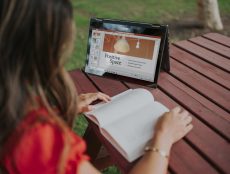
Industry News
Teachstone Unveils CLASS 2nd Edition, Creating a More Equitable Path to Meaningful Interactions
By eLearning Inside
March 21, 2022
Teachstone, developer of the Classroom Assessment Scoring System (CLASS®) included in 23 states’ Quality Rating and Improvement Systems (QRIS) and used by Head Start programs nationwide, released a preview of CLASS 2nd Edition Measurement Suite. Designed specifically for Pre-K–3rd grade learning environments, CLASS helps educators focus, measure and improve classroom interactions—key factors in supporting children’s academic and lifelong success.
CLASS 2nd Edition incorporates innovative and responsive enhancements with a focus on improving equity, access and impact. Key innovations, developed in partnership with the field, include more inclusive and diverse definitions and representation, considerations for scoring across diverse settings and guidance for reducing bias. In addition, the updates provide educators with actionable insights on the experiences and interactions that play an important role in child development.
Highlights of CLASS 2nd Edition include:
Reimagined CLASS Observation Training: Redesigned to offer a more comprehensive training experience that leaves observers feeling more confident in their ability to effectively observe interactions, specifically across diverse settings.
Enhanced CLASS Manual Set: Carefully reviewed and supplemented to make meaningful interactions more equitable, inclusive and accessible.
A new measure of quality, CLASS Environment: Added so educators can take a holistic approach to support child outcomes by measuring and improving the elements of an environment that lead to high-quality interactions.
“As an organization that helps define quality, we have an obligation to make sure that our definitions reflect, are inclusive of and celebrate the assets of the diverse communities we serve,” said Teachstone Co-Founder and CEO Bridget Hamre during a presentation this week at the InterAct Now: CLASS Summit. “We define interactions through our written materials and in the training and tools we provide the field. And although the interactions described in CLASS resonate with many educators across cultures and communities—across the country and around the world—we need to do more to ensure we are supporting a vision for what those interactions look like that is more inclusive, more representative and that does more to show how educators can individualize their interactions to best support every child they with whom they work.”
Together, the enhancements ensure CLASS 2nd Edition reflects the diverse communities Teachstone serves—creating a more equitable, efficient and effective path to meaningful interactions among educators and learners.
“CLASS 2nd Edition is easier to use and more applicable for the classrooms we serve across diverse settings,” said Teachstone Co-Founder Bob Pianta. “We worked hand-in-hand with educators to help ensure the CLASS measurement suite provides authentic and inclusive examples of interactions from many cultures and communities. I’m proud of this step forward for CLASS and our partners.”
Teachstone® was founded in 2008 to deliver the Classroom Assessment Scoring System® nationwide and around the globe. Developed through years of research, the CLASS® observation tool measures interactions between teachers and children, which have been shown to drive learning and lifelong achievement. CLASS, adopted as part of the federal Head Start monitoring protocol in 2010, is used to assess the effectiveness of teacher-student interactions. Teachstone’s CLASS tool is making a difference in classrooms in 50 countries worldwide.
Featured image: Element5 Digital, Unsplash.









[…] to a massive library of user-generated flashcard decks and other study resources, the company has recently begun to develop AI capabilities (known as Learning Assistant) to personalize this resources for individual […]
[…] to a massive library of user-generated flashcard decks and other study resources, the company has recently begun to develop AI capabilities (known as Learning Assistant) to personalize this resources for individual […]
From my experience, it also helps when you shift your focus from results to the process itself.